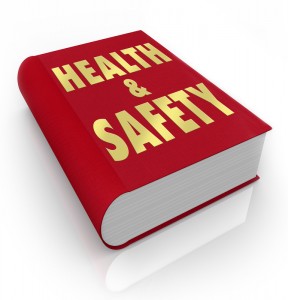 The alarming case of a gardener trapped under a ride-on lawn mower has emphasised the importance of maintaining accurate health and safety documentation. The 30-year old groundskeeper was trapped underwater by the mower after it rolled down a steep bank and into a lake.
The alarming case of a gardener trapped under a ride-on lawn mower has emphasised the importance of maintaining accurate health and safety documentation. The 30-year old groundskeeper was trapped underwater by the mower after it rolled down a steep bank and into a lake.
What makes this story unusual
Agricultural accidents on country estates are not statistically unusual. The 2013 HSE annual report suggests that agricultural workers are more than twice as likely to be killed at work than those in any other sector for instance.
What makes this incident slightly more unusual however was its location. The accident involved one of the gardeners working at the Queen’s Sandringham Estate in Norfolk.
No employer escapes HSE scrutiny
Following the incident, Health and Safety Executive (HSE) officials compiled a report into factors that may have led to the man’s injuries. Among their observations (released as part of a BBC Freedom of Information Act request) were:
- The gardener was wearing his seatbelt whilst operating the mower.
- The roll bar fitted to the ride-on mower had not been deployed.
- That some of the health and safety risk assessments circulated to employees were out of date.
- The incident may have been avoided through better training of staff.
The HSE concluded that had the roll bar on the mower been correctly deployed, the man would have had enough clearance to free himself from his seatbelt as he lay underwater. The lawn mower would also have been held clear of the pond bed, so that the worker would not have been pinned down by the weight of the machine.
Heroes to the rescue
The man involved in the accident had been trapped underwater for several minutes by the time emergency services arrived. Once freed from under the mower, police administered CPR whilst awaiting the arrival of an air ambulance.
Fortunately the gardener has since made a full recovery. Two police officers and a gardener who helped in the rescue were later honoured with testimonials from the Royal Humane Society. It is only because of the prompt attention of these professionals that prevented the accident becoming a tragedy.
Lessons for the future
Although the HSE concluded that no further action was required in this particular incident, the finding that health and safety risk assessments were out of date serves as a warning to employers across the UK. Although there are no set standards for reviewing risk assessments, most should be revisited at least once a year to ensure they remain fit for purpose.
These reviews need not be hugely in depth, unless significant changes are identified. Issues to consider include:
- Is the safety equipment mentioned in the document still in use? Has it been updated or replaced?
- Has the activity detailed been changed at all? Are there any additional risk factors to consider which are not currently documented?
- Have staff been fully trained in the use of new equipment or working practices? Do you have records to prove this?
In the Sandringham incident, the out-dated risk assessments were not believed to have contributed to the accident. Had one of the suspect risk assessments related to mowing however, the HSE would certainly had to have taken additional steps – potentially evening issuing the Royal Estate with a fine.
Getting help
Where time and resources are tight, businesses may benefit from having third-party assistance with reviewing and rewriting risk assessments. Doing so will help raise safety levels across their company, reduce the chance of injury to employees and help avoid costly HSE intervention in the event of an accident.
How often do you review risk assessments? Has the HSE ever criticised the accuracy or relevance of assessments? Please comment below.

A chartered (fellow) safety and risk management practitioner with 20+ years of experience. David provides a healthy dose of how-to articles, advice and guidance to make compliance easier for construction professionals, Architects and the built environment. Get social with David on Twitter and Linkedin.




One Comment
[…] Your health and safety documentation needs to be fully up to date? Veritas Consulting help SMEs with compliance from Construction to property and retail. […]